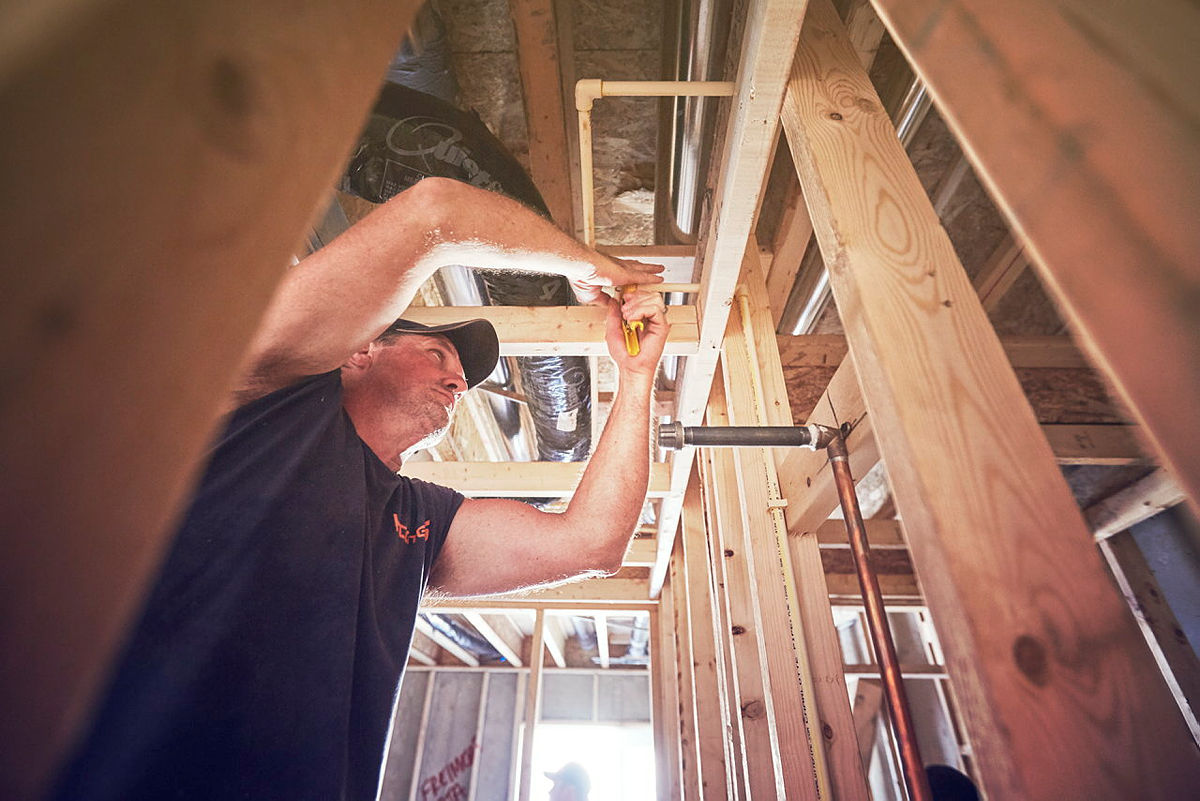
By: Jonathan Simon on July 20th, 2021
Top 5 DIY Mistakes for Service Plumbers to Watch for with CPVC
Since 1959, more than 12 billion feet of FlowGuard Gold® CPVC pipe has been installed in the U.S. This product has proven to be extremely reliable, with many systems still in service after 40 or more years.
However, like any system, a bad installation can cause FlowGuard Gold CPVC to fail. Many of these failures can be attributed to well-intentioned DIYers who simply didn’t have the knowledge, the skill set or the resources of a professional plumber to complete the installation properly.
As a service plumber, it’s important to recognize the root causes of these failures, so that you can repair it properly. Following, we have identified the top five installation questions you should consider when making a repair.
Was the fitting correct?
To ensure a successful installation and years of worry-free performance, FlowGuard Gold pipes must be used with FlowGuard Gold fittings.
However, for many DIYers, all fittings look the same. Its not uncommon for a homeowner to buy white PVC fittings for use with FlowGuard Gold CPVC, but these fittings will not fit on CPVC pipe, even if they are the same nominal diameter. CPVC fittings will be tan in color and will be labeled CPVC. If a PVC fitting is used on a FlowGuard Gold system, it may fail when exposed to the temperatures and pressures seen in a hot and cold-water distribution system. So, during your repair, check to see what type of fitting was initially installed, and make sure that you are replacing it with a FlowGuard Gold fitting.
Was the right cement used?
When a DIYer walks into big box store, they are presented with a lot of different cements choices, including many PVC and ABS options. For the untrained eye, it can be difficult to recognize the difference among the selections and as a result the incorrect option is often chosen. We’ve even heard stories of some people using products like an all-purpose glue, which aren’t suitable for any plumbing application.
To avoid blown joints and costly failures, it’s important to select a cement that is formulated to work specifically with CPVC pipe. For FlowGuard Gold, we recommend FlowGuard Gold one-step solvent cement.
As you are likely aware, solvent cements are color coded, and FlowGuard Gold one-step cement is yellow. If a cement is blue, black or clear, it is not suitable for CPVC applications.
Was the cement applied properly?
Proper application of the cement is also critical to the job’s success. A heavy, even coat of FlowGuard Gold one-step solvent cement should be applied to the outside of the pipe, with an additional thin coat applied to the inside. If the original installer put too much cement inside the fitting, it can puddle in the fitting causing damage. If they put too little cement on, there could be gaps in the joint which can become leaks.
During your repair, an even bead of cement should be visible around the joint. If it is not, disassemble and remake the joint to ensure system integrity.
Was expansion and contraction accounted for?
CPVC piping expands and contracts in response to changes in temperature. For each 50°F temperature increase, FlowGuard Gold will expand about one inch per 50 feet of straight pipe. This will cause the pipe to move.
Sometimes during an installation, novice installers will restrict the natural lateral movement of the pipe either by overtightening supports, or not leave adequate spacing around supports or joists. While FlowGuard Gold is a robust product that can last for many years under stresses well beyond normal tolerances, it will eventually fail.
Check to see if the lateral movement of the pipe has been restricted and be sure to give the pipe adequate space for expansion and contraction during the repair process.
Were other undue stresses put on the pipe?
Expansion tanks, when improperly installed, can also put stress on the pipe. According to code, these tanks should be mounted. If they’re not, the weight of the tank will pull on the pipe and eventually cause it to break.
During your repair, identify any areas of physical stress that may have caused the failure such as heavy weight or excessive bending stress, and ensure that all pipes are installed and supported properly without excessive stress that may compromise its integrity.
FlowGuard Gold CPVC pipe has a proven track record of long-term success. With proper installation, it will perform reliably for decades. For more information on servicing FlowGuard Gold, download our Servicing CPVC Quick reference guide.

